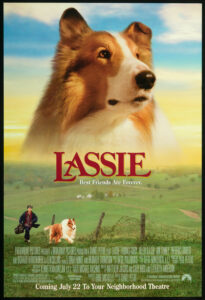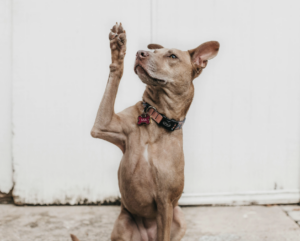 In the glamorous world of Hollywood, amidst the sparkling lights and blockbuster action, a different kind of star often steals the show—dogs. From classics like “Lassie” and “Old Yeller” to contemporary hits like “Marley & Me” and “A Dog’s Purpose,” canine actors have captured the hearts of audiences worldwide. But how are these four-legged performers trained for their roles on the big screen? Let’s take a behind-the-scenes look at the meticulous training and care of dogs in the entertainment industry.
In the glamorous world of Hollywood, amidst the sparkling lights and blockbuster action, a different kind of star often steals the show—dogs. From classics like “Lassie” and “Old Yeller” to contemporary hits like “Marley & Me” and “A Dog’s Purpose,” canine actors have captured the hearts of audiences worldwide. But how are these four-legged performers trained for their roles on the big screen? Let’s take a behind-the-scenes look at the meticulous training and care of dogs in the entertainment industry.
The Journey Begins: Selection and Basic Training

The path to stardom for a Hollywood dog starts with the right disposition. According to animal coordinators and trainers, the ideal dog for film work is not necessarily the one that performs tricks flawlessly but rather one with a calm temperament, willingness to learn, and the ability to adapt to different sets and sounds. Dogs with a playful nature and those that are food or toy motivated are often easier to train and handle on set.
Once selected, the basic training commences, which includes commands such as sit, stay, come, and heel. But that’s just the beginning. The dogs must learn to perform these commands amidst distractions and in various environments, mimicking the chaotic nature of a live film set.
Specialized Training: Custom Tricks for Specific Roles
Depending on the role, dogs might need to learn specific tricks or behaviours. For instance, a script might require a dog to limp, bark on cue, or even play dead. Each behaviour is broken down into small, manageable parts, so the dog can understand and learn gradually.
Positive reinforcement, such as treats or affection, plays a crucial role in training. Trainers use a clicker or a verbal marker to communicate precisely when the dog does something correctly, followed by a reward. This method not only speeds up the learning process but also ensures that the dog is having fun.
 On-Set Life: Ensuring Safety and Comfort
On-Set Life: Ensuring Safety and Comfort
Life on set for a canine actor is quite regimented to ensure their safety and comfort. Dogs work limited hours, similar to child actors, which helps prevent them from becoming over-tired or stressed. The well-being of the animals is paramount, with laws and regulations strictly enforced by unions and animal rights organisations like the American Humane Association, which awards the “No Animals Were Harmed” certification to productions that meet specific standards of animal safety.
Moreover, the trainers ensure that the dogs have a ‘safe spot’ on set—an area where they can relax and unwind between takes or when the environment becomes too stressful. This spot is equipped with familiar toys and comfort items from the dogs’ own homes, helping to provide a sense of security.
Post-Production: Life After the Limelight
What happens to these canine stars once the director yells “cut!” for the last time? Many of the dogs return to their normal lives, often with their trainers or adoptive families, some continue to work in other productions, while others enjoy a well-deserved retirement.
The bond formed between the trainers and their canine stars often lasts a lifetime. Trainers continue to provide care, exercise, and mental stimulation even after the dogs have retired from their film careers, ensuring they lead happy, healthy lives.
The fascinating world of dog training for Hollywood is a blend of art, science, and sheer patience. It requires trainers who are not only skilled in animal behaviour but also deeply compassionate and committed to the welfare of their four-legged charges. As audiences, while we enjoy the on-screen antics and heart-warming performances of these canine actors, it’s heartening to know the extensive preparation and care that goes into ensuring their performance is as joyful for them as it is for us.